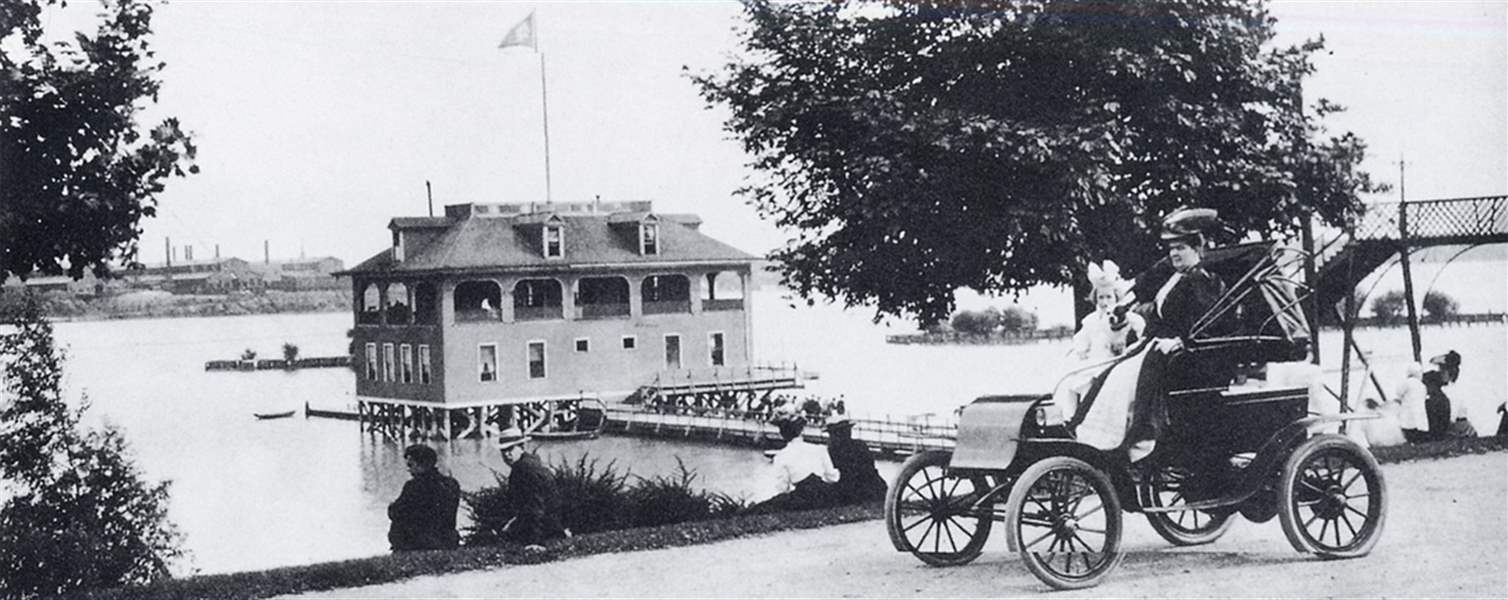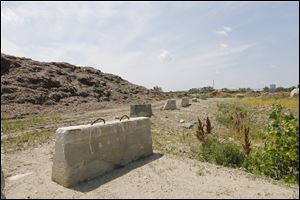
TOLEDO
City park could show benefits of river dredgings
Council to consider $2M project
7/15/2014
A 1909 photo shows a boathouse in Toledo’s Riverside Park. The photo from ‘Lake Erie: A Pictorial History’ cited the park opened in 1894. But it has not been used as a park in many years.

A 1909 photo shows a boathouse in Toledo’s Riverside Park. The photo from ‘Lake Erie: A Pictorial History’ cited the park opened in 1894. But it has not been used as a park in many years.

An old city park on the Maumee River could soon become a demonstration site — complete with a farm field — to show the beneficial alternative uses of material dredged from the Toledo harbor shipping channel.
The project, still in its conceptual stage, is aimed at helping to promote alternatives to open-lake disposal. The city and the Toledo-Lucas County Port Authority would use part of the 52-acre Riverside Park located along the river on North Summit Street.
The issue is on the agenda of Toledo City Council at 4 p.m. today for possible passage.
Tim Murphy, commissioner of environmental services for the city of Toledo, said the plan is to set aside about 15 acres and to receive about 100,000 cubic yards of dredged material annually. He said the cost is estimated at about $2 million, with the money coming from the $10 million Healthy Lake Erie Initiative enacted by the Ohio legislature. It would require building a bulkhead or dock to accommodate dredging barges.
“It’s a demonstration project. You’re demonstrating the beneficial uses of dredged material,” Mr. Murphy said. “The ultimate goal is to show the agricultural community there are some benefits to this dredged material. It’s relatively conceptual right now.” He said maintaining a viable port and clean water in Lake Erie are two reasons for the city’s involvement.
The resolution sets up the Great Lakes Dredged Material Center of Innovation. He said more legislation, such as for the site’s zoning, likely would follow.
Joe Cappel, director of cargo development for the port authority, said the money also would be needed to prepare the site with road access, fences, and drainage.
The location on Summit sits behind Jamie Farr Park across a fence, a line of trees, and two sets of railroad tracks, and has long been inaccessible to the public. Opened in 1894, Riverside Park once had a boathouse and docks. As recently as 1987 there was a plan to develop ball fields, picnic areas, and hiking paths. Today the city uses it to compost leaves. Mr. Murphy said there is some illegal dumping on the site.

The Toledo skyline is barely visible in the distance from Riverside Park, which is used by the city of Toledo for composting leaves. There is also some illegal dumping on the site, city leaders say.
Mr. Cappel said maintaining the shipping channel is important to the Toledo port, which supports 7,000 jobs with more than $380 million in revenue to businesses that depend on cargo handled by the port.
The dredged channel is about 100 feet wide and extends 18 miles into Lake Erie from the mouth of the Maumee River and as far upriver as the I-75 bridge.
Mr. Cappel said the U.S. Army Corps of Engineers spends about $5 million a year moving about 600,000 to 900,000 cubic yards of sediment out of the river into an open site in Lake Erie.
The longstanding practice draws ire from scientists who believe open-lake disposal contributes to western Lake Erie’s algae blooms and harms fish reproduction by stirring up sediment laden with phosphorus.
“Even if we got all $10 million it wouldn’t be enough to eliminate open-lake disposal, but at least it’ll be enough to launch some projects that can be scaled up in the future,” Mr. Cappel said.
“You would have an agriculture field site right there on the project,” Mr. Cappel said, with the possibility of crops such as alfalfa.
The sediment is considered nutritious to a farm field. “There’s a lot we can do at the site to convince farmers to maybe take on larger quantities in the future.”
And because it is sediment, it can be used to raise the elevation of farm fields, or to serve as edge-of-field barriers, or even in non-agricultural uses, such as fill for demolished houses in Toledo, landscaping, and shoreline improvements.
The United North community development corporation, which includes North Toledo in its service area, did not know about the plans until Monday, said Terry Glazer, chief executive. He said it should be subject to a neighborhood hearing before any decisions are made about Riverside Park.
“We don’t know anything about it, and it’s in our neighborhood,” Mr. Glazer said. “This may be a great thing but we don’t know.”
Contact Tom Troy: tomtroy@theblade.com or 419--724-6058 or an Twitter @TomFTroy.